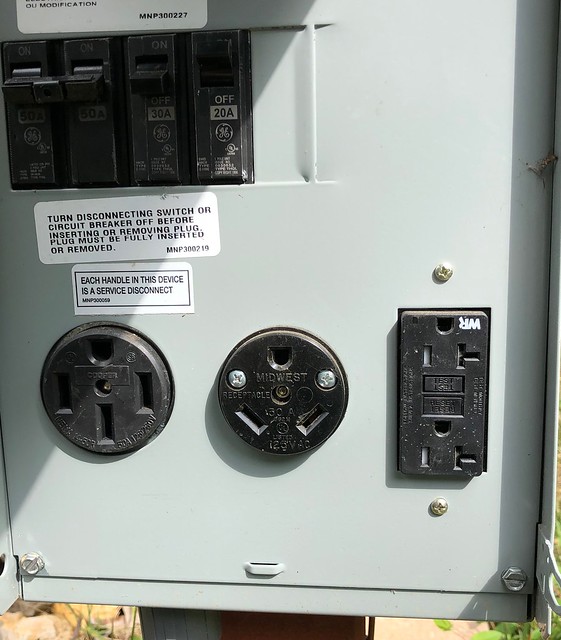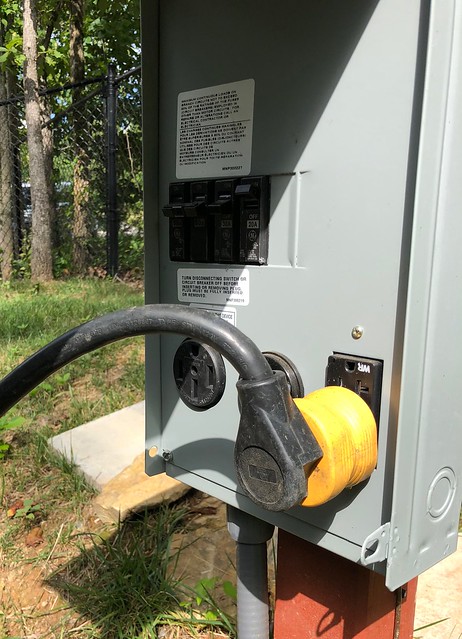I've seen a lot of whacky stuff in this field, particularly when I did residential work. One apartment had all of the outlets wired in reverse polarity. The metal box and outlet covers were all hot! I had to rewire them all.
That’s the first thing I check in all outlets before screwing with anything else if helping someone in a non-electrician, non-official capacity and in my own houses as soon as I move in.
The simple socket tester will catch that, and LOTS of Happy Homeowners have reversed hot and neutral and created a hazard when doing their own DIY crap when they don’t know what the heck they’re doing.
I like the socket testers with the GFCI test button on them these days to find the hidden and mis-wired, mis-used GFCI branch circuit problems too, like Happy Homeowner protecting a new bathroom with a GFCI that actually trips out two other rooms via the old branch wiring... arrrrgh.
People do incredibly stupid and dangerous crap in residential electrical thinking they did it right.
If they start messing with the panels or installing their own sub-panels (my last house, Happy Homeowner put a sub-panel in the basement when they finished it, and it was done completely wrong, both for overall load and improperly bonding neutral at that panel to ground) all bets are off.
You should have seen what they did to the PHONE wiring in the old place. OMG that was a cluster**** to clean up, but at least they weren’t going to burn the house down with what they did there.
The amazing part was they did the detached garage sub-panel correctly. I can only guess that a real electrician was involved in that one unlike the finishing of the basement... sigh.
I usually have vintage radio gear around that only has two prongs. Some dingleberry reversing hot and neutral can get me smacked when an old radio’s metal RF shielding case is hot because the neutral is bonded to the frame. Never been hit by that yet, but it’s why I check everything in any new to us house.
I usually want to look behind at least a few outlets and switches especially if they look new, too.
Usually Happy Homeowner has used the “stab” connections on those out of convenience instead of the screw terminals because they didn’t know how to do it right and make a proper mechanical connection.
After a number of years of those things being installed you can usually pull the wire right out of the stabbed connection on the back. I avoid those unless I absolutely have to use them inside a box.
One night I was sitting here in this house and kept hearing a zap. Someone had used the really old fashioned and non-code light switches and in many boxes had put TWO wires into the “laid sideways” style friction connections. One had finally worked loose and was arcing inside the switch box every so often that was feeding the outside light on a branch circuit that fed three light switches.
I couldn’t believe it when I saw that crap. I did a bunch of re-work to clean up the worst of it, but I’ve been tempted to have an electrician come in and re-work the entire upstairs. The basement was finished later in this house also, and you can tell a real electrician did that work down there, also. It’s right.
I have some long run branches that have way too much voltage drop at the end for things to be “right” when I put a load at the end — one of those runs to my office and when I first put the laser printer in the outlet I wanted and watched the lights start flickering in time with the fuser warming up, I knew things “weren’t right” in that branch. The old hair dryer load test trick in there also would have caught that.
I keep putting off having an electrician out to do it because I want to do a whole house genset out here eventually, and I’ll just hire the sparky to do that main panel work and have them add on to the contract to re-work the upstairs garbage work. It’s not “unsafe” but it isn’t right.
I bet there’s a LOT of reversed plugs and switches with the Happy Homeowners retrofitting “smart devices” into their older homes too so they can tell Alexa to turn off the lights and plugs.
The things people will do trying to fix three-way switches at the top and bottom of the staircase are just mind-boggling, too. Hahaha.





